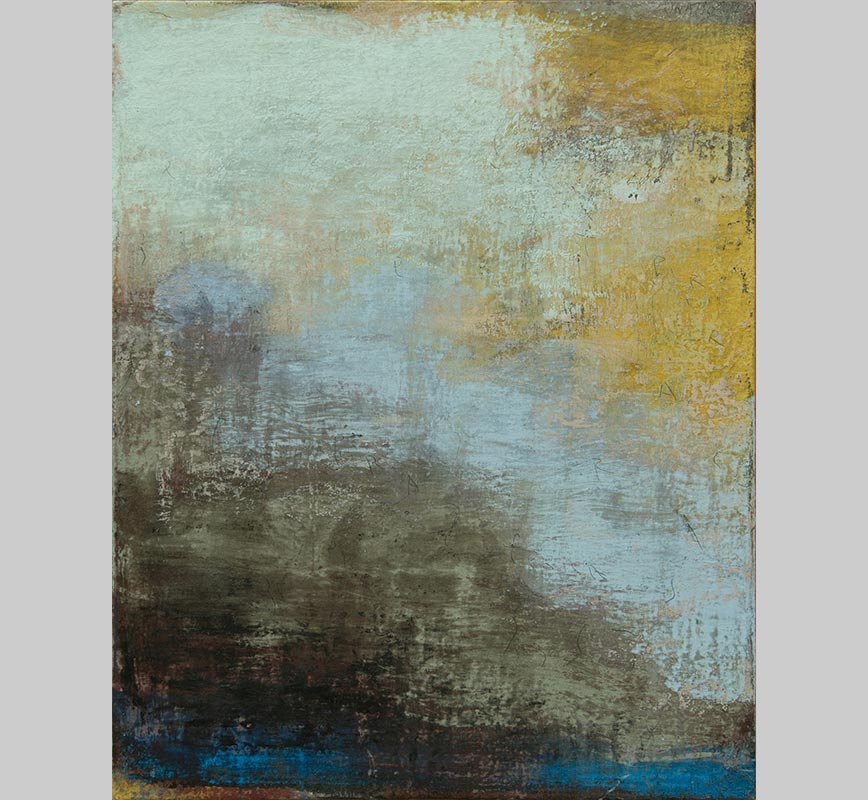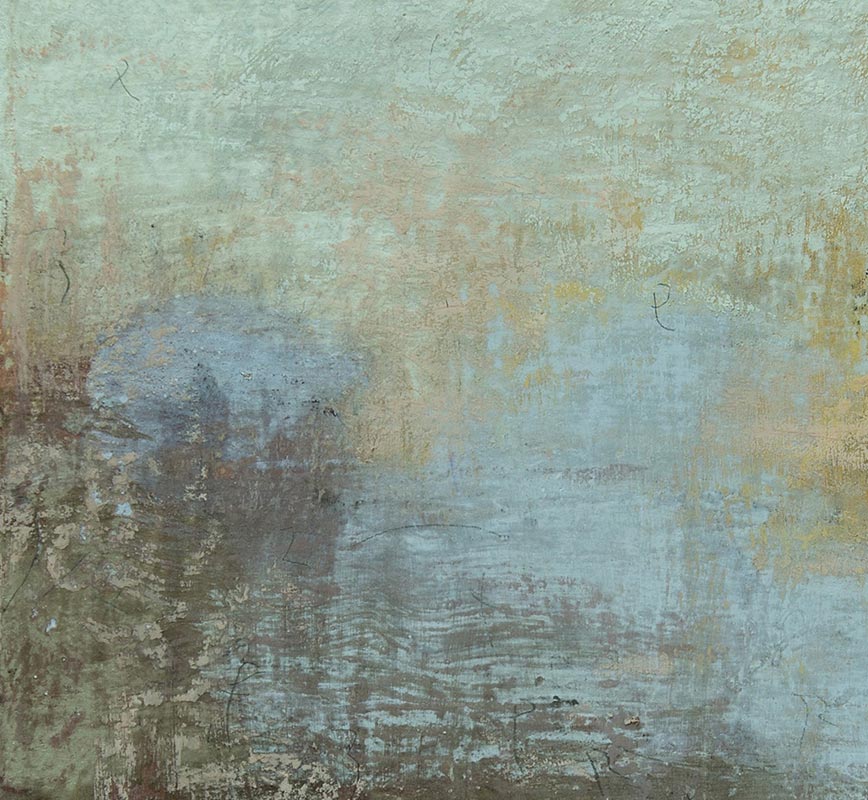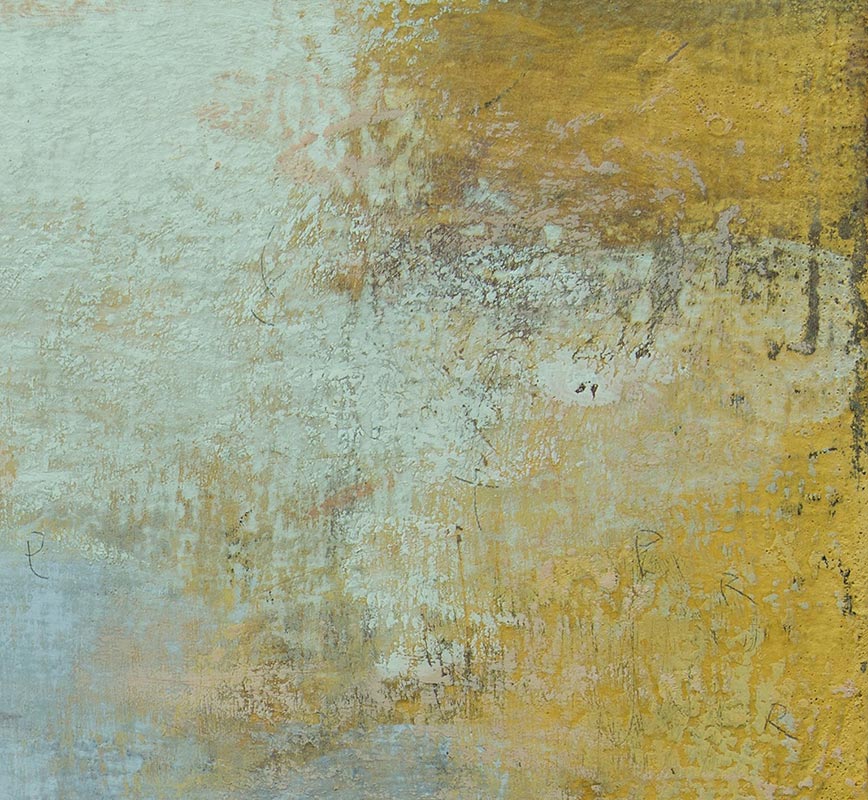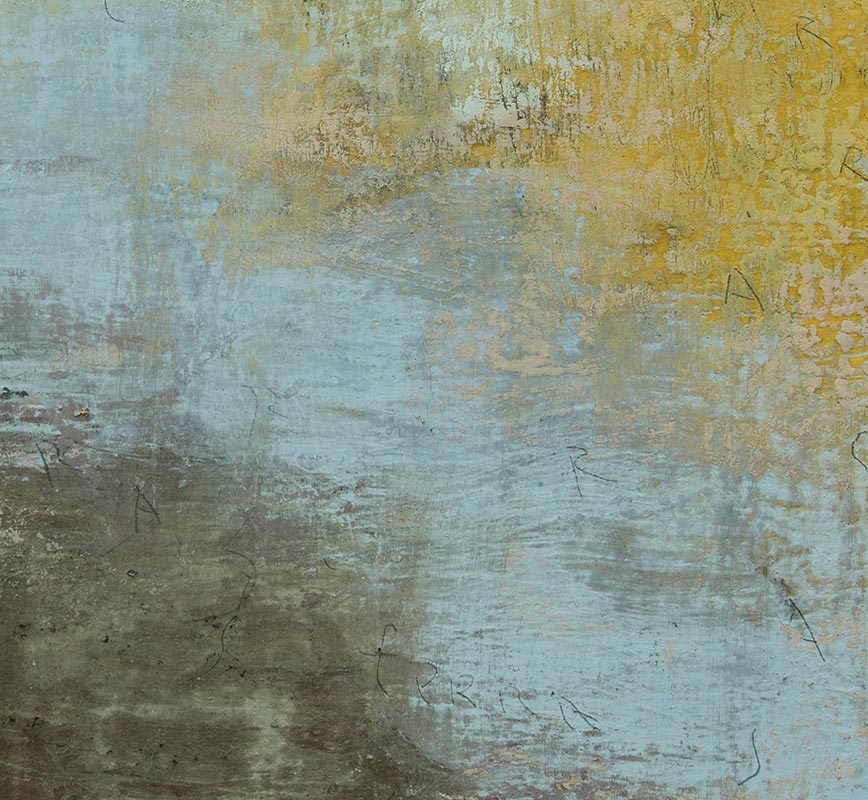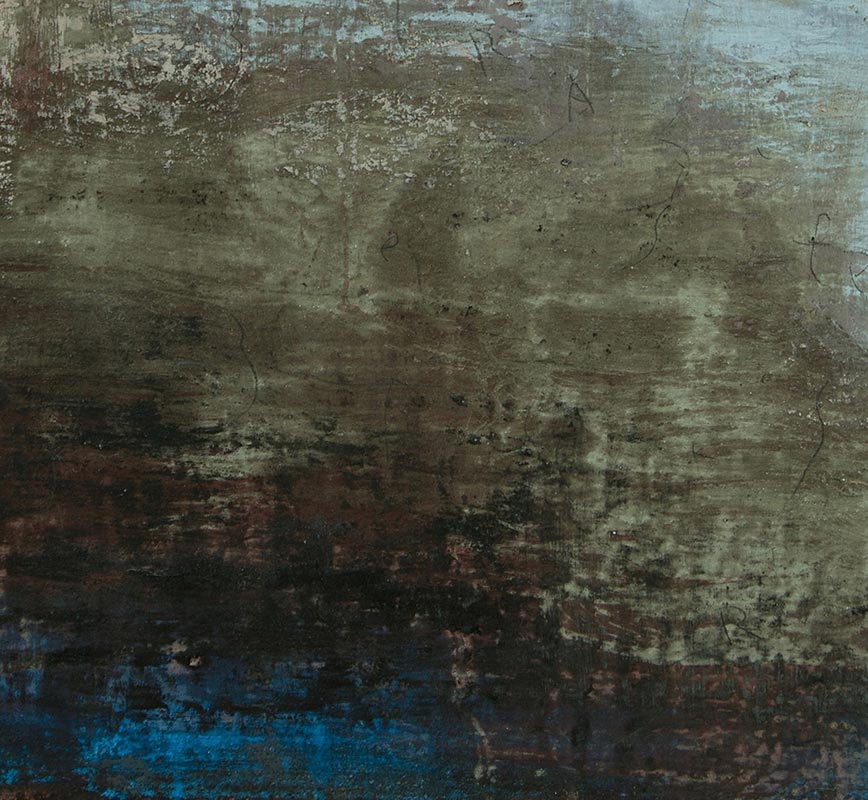EXHIBITION
AN ALCHEMY OF MATTER
Orazio De Gennaro:
XI:MMIX, 2009
Oil Pastel, Graphite, and Pigment on Canvas
82 x 72 in
208 x 183 cm
US $ 14,000
Orazio De Gennaro’s painting exudes an earthy, organic vibrancy that feels both ethereal and grounded. The layered textures and rich palette—a mix of dusky charcoal tones blending into warm ochres, with sharp accents of turquoise and red—evoke a rugged landscape reminiscent of Benevento's storied terrain. The interplay of pastel and graphite on canvas lends a tactile immediacy, contrasting with De Gennaro’s delicate, almost ephemeral brushstrokes. This approach draws parallels to Anselm Kiefer’s explorations of history through layered materials but diverges with De Gennaro’s distinctly Italian warmth and intimacy. ...more
Go to Artwork: NEXT PREV ALL
